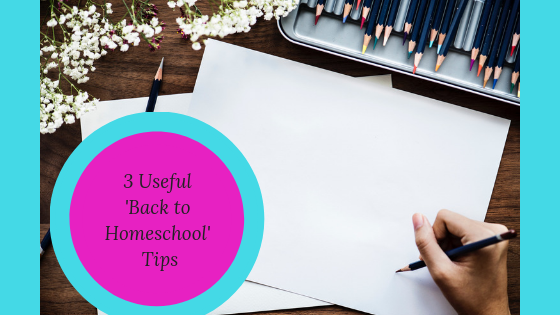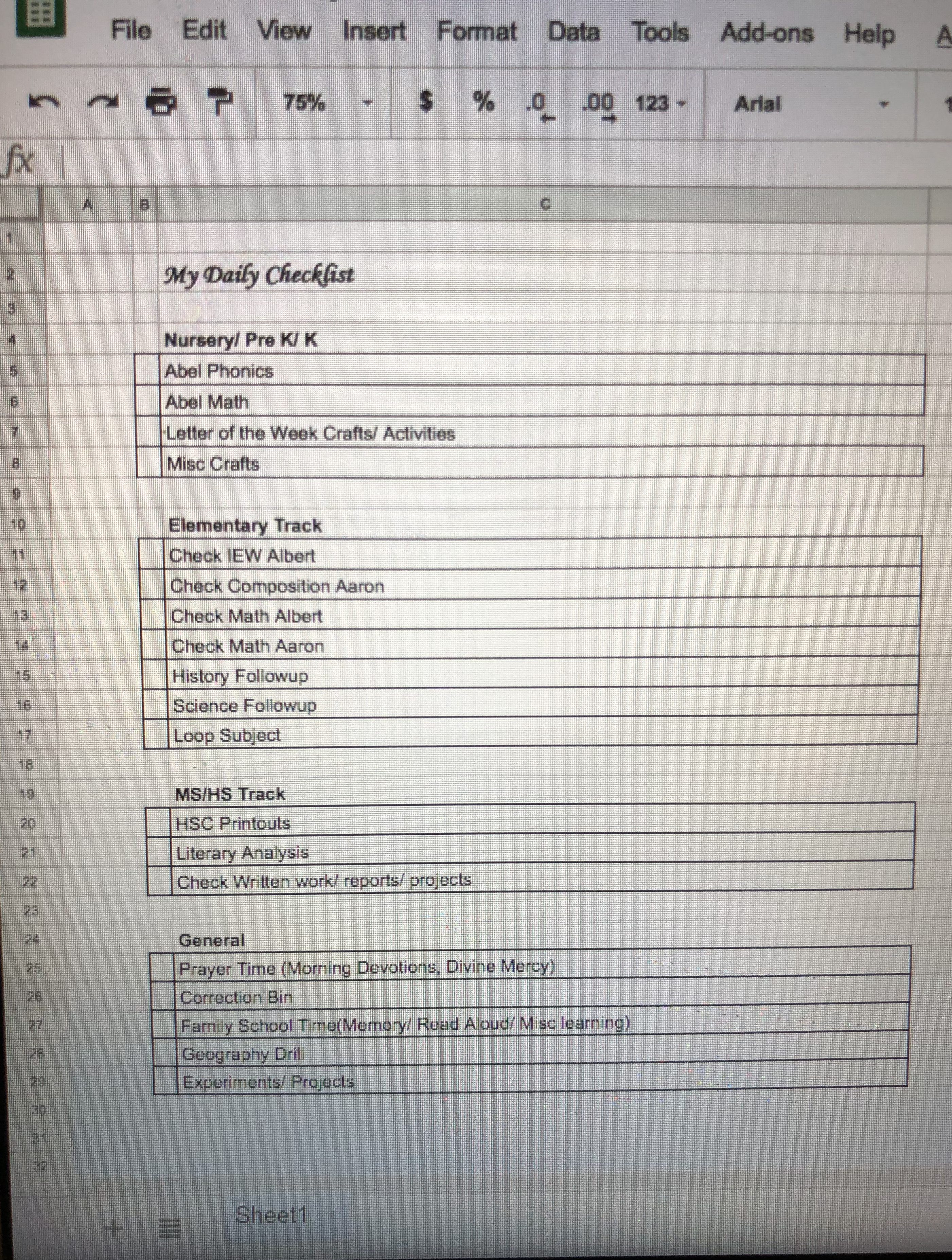We technically homeschool year round, but with a different schedule during summer. We try to officially start the new school year late July to early August, so that we get a head-start for the year, and can give in to few random days we may need to take off during the year. The reason we homeschool year round, is so that the kids will still be in a ‘learning mode’, and won’t have to make major adjustments as the new school year starts. But even then, it is still an adjustment to get used to the new year, curriculum and understanding workflow; especially as each year, new students are added to the mix!

We already started the new homeschool year early August, and so far we are off to a good start! I want to share few tips that I feel are very important to a smooth year.
We are eclectic homeschoolers, which also means more effort from my part to lesson plan and structure things out, and make sure the whole day is streamlined with a good workflow; taking into consideration the different needs of different age groups. This year, I have 4 in grade school, 1 in Kinder, 2 in Pre-K and 1 in Nursery. So it is important to tackle certain things up front which ensures a smooth year.
Some years, I had a rough start, especially when I hadn’t paid attention to certain things up front that cater to the initial few weeks, and some which extend throughout the school year.
Unless you place God at the center of your homeschool, and give more importance to Godly discipline than any other aspect of homeschooling, your homeschooling will not be successful.
I would also like to share some simple, practical things that can set the stage for peace of mind later:
(1) Make a homeschool checklist for yourself– I usually make a homeschool checklist for myself so that I can keep track of what I need to be doing consistently either daily or over the course of the week. I encourage self- teaching and independent study starting at a young age. But even then, there are certain subjects or topics I teach. I also have to make sure I remember to have all the printouts or other stuff accessible to them when they need it.
The checklist is basically a list of things I need to do daily with multiple kids, so that I remember that I need to do it, and thus not ending up neglecting something I had planned to do with them. Example, there was one year I sort of neglected to do Read Alouds and let it slip through, though it was on the kid’s daily checklist. So whenever they would approach me for it, I would tell them we’ll do it later and then most days end up not doing it, as I forgot later. But ever since I started making a checklist for myself, I have been able to follow through better.
My checklist looks something like this:

I try to keep it very simple and do-able, by only including things I need to do something; I don’t put in anything that the kids do completely on their own. (Example, my older kids now also correct their own math, so I don’t have it on my list. However, I correct any tests, which they keep in the Correction Bin). Also, the loop subject rotates daily (includes religion, grammar, health and nutrition, Latin, and few other subjects).
Apart from this, I also have a very simple physical planner that I use to write in anything I need to do specifically for the coming days, eg: putting a library book on hold or the like. I also pen in the last completed page of certain subjects, especially of ones which I teach, so I know where to pick off next.
I put the checklist into a sheet protector, and have it accessible on my desk, to check off with a dry erase marker, and so I can re-use it daily.
Once you have an idea of what you need to be doing each day from your end, you have things under much more control.
(2) Have some crafts and other activities printed ahead of time for the younger ones especially for the first few weeks- In the excitement of school starting, sometimes the youngest few can get super-excited, as they want to do school like their older siblings. I usually end up having to hand over several crafts/ activities in the initial weeks. During this crucial time when you are trying to figure out the workflow yourself, it can get distractful to head to the printer and print on request. If you have a bunch of stuff printed ahead, it can be a huge blessing. This has saved a lot of sanity for me.
Another perk is that it will keep up their enthusiasm for learning until when you actually get time to start sitting with them. If they lose their interest the first few weeks because they didn’t get enough ‘schoolwork’ to do, they might just call it quits the rest of the year. So remember to keep your younger ones adequately challenged, yet mostly with things they can do by themselves.
(3) Discipline and setting up habits– The most important thing that should not be overlooked during the first few weeks especially, is proper discipline. If you let it slip through, you are setting up for chaos later. I have heard many parents say they find it hard to teach as their kids don’t sit and listen. While some cases could be due to different learning styles; most of the time, it is hardly the case. It is usually because proper discipline was not emphasized initially, and so the kids found a way to get around. We have to emphasize on prompt obedience, diligence and value of hard work. Neglecting these can set up for hard days later. Emphasizing these daily, and carefully implementing can lead these to become very essential habits for life. Also, if there are any other areas you want kids to be more consistent in (personal prayer, personal hygiene, etc), it is best to start doing at the beginning of school year when everyone is ready to embrace the ‘newness’ of the year.
Teaching good work habits can go a long way. Teach them to keep their desks free of clutter and put back books as soon as they are done with the lessons. Have them clean up after their school work. If they keep their books and pencils out after school, I call them back and have them put everything back. Teach them to assume responsibility for their work, by collecting their corrected work, and filing them away appropriately.
Be present with them those first few weeks, and it will really pay off later.
If you pay close attention to these few steps at the beginning of the homeschool year, you will find the transition easier and a much smoother homeschool year! Wish you all the very best for the coming year!
